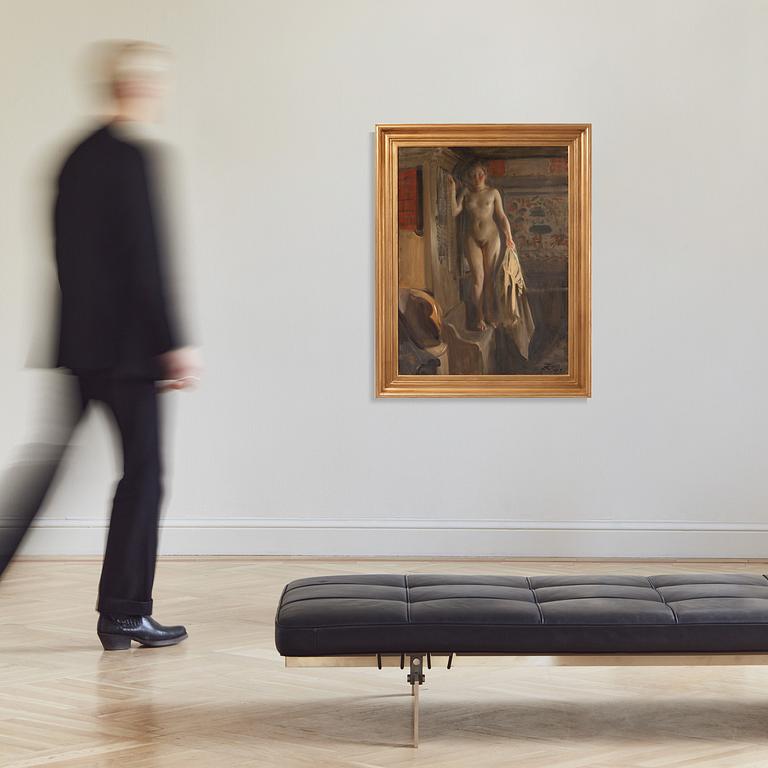Anders Zorn
"Kuvåsängen"
Signed Zorn and dated 1918. Canvas 100 x 75 cm.
Alkuperä - Provenienssi
Earlier in the estate of Anders Zorn, sold by the Zorn collections, Mora.
Fritzes Kungl. Hovbokhandel, Stockholm.
Private Collection.
Näyttelyt
Konstföreningen, Stockholm, "Zorns utställning. Till förmån för Röda stjärnan", 18 February - 10 March 1918, cat. no 26.
Liljevalchs konsthall, Stockholm, "Bruno Liljefors - Anders Zorn", 10 April - 25 April 1920, cat. no 87. Titled "Maja".
Liljevalchs konsthall, Stockholm, "Anders Zorn - Minnesutställning", 1 March - 6 April 1924, cat. no 195.
Liljevalchs konsthall, Stockholm, "Zorns samlingar", 5 February - 5 March 1930, cat. no 149.
Kirjallisuus
Tor Hedberg, ”Anders Zorn. 1860-1893”, SAK, 1923, illustrated p. 133 (pl. 89) and mentioned p. 149.
Gerda Boëthius, ”ZORN. Tecknaren, Målaren, Etsaren, Skulptören”, 1949, listed in the catalog under the year 1918 p. 555.
Muut tiedot
"Kuvåsängen" from 1918 is an exquisite interior from Zorn's Gammelgård in Gopsmor were Zorn engages in a penetrating study of light and shadow. Daylight, which interacts with the darkness of the composition, enters from the window on the right and illuminates the model's left side where she stands naked on the bench and meets the viewer's gaze.
The motifs from Gopsmor were created with a serious intention. Zorn came from a village with old-fashioned customs and simple conditions. His depictions of rural life were created at a time when industrialism threatened inherited patterns of life, and the paintings took on the character of uncomplicated counter-images to the accelerating development towards "modernity".
Hans Henrik Brummer has spoken of "a deepened emotional content, which in this context can be described as a mild love of the homeland" and continues his argument by stating:
"His pictures from Gopsmor tell of the sensuality of a simple form of life. That he depicted an Arcadian paradise was entirely in accordance with his artistic program. The extensive production from Gopsmor shows great variety and consists largely of popular images'.




























































